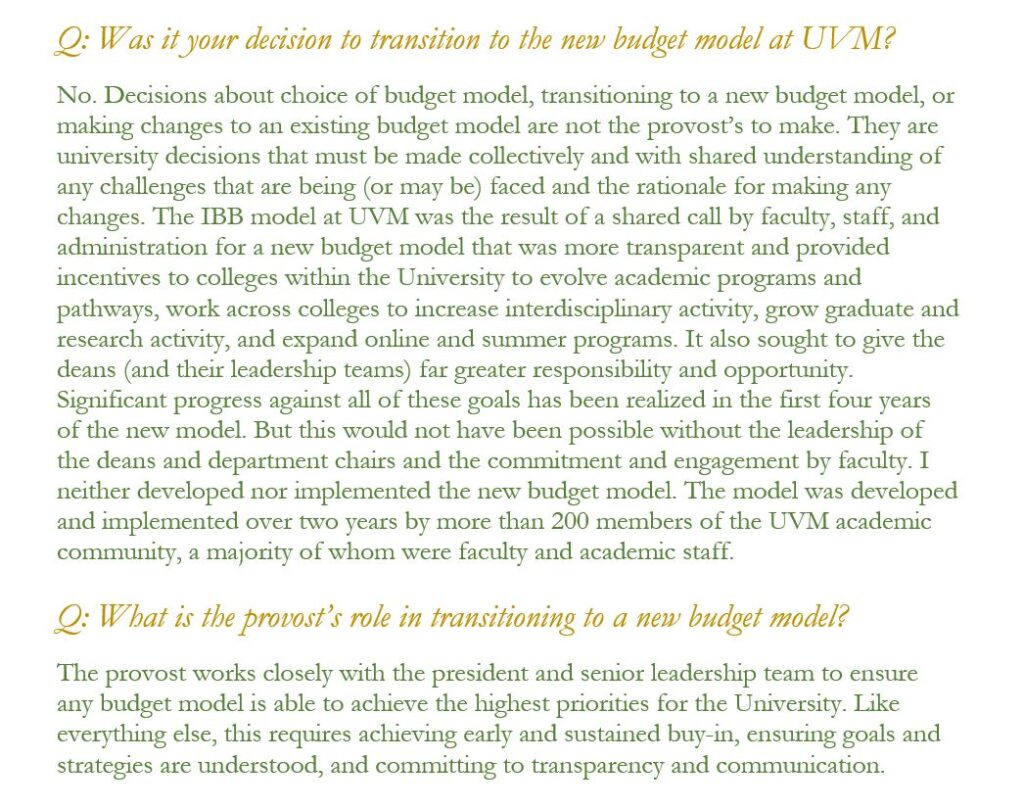
In FY13, the University community engaged in a discussion about the characteristics and operation of its existing budget model. Those discussions included governance leaders, Trustees, deans, academic and administrative business managers, members of the Faculty Senate, and other constituents. There was uniform agreement on the model’s problems: lack of transparency, undue complexity, little flexibility, and few incentives.
President Sullivan asked Provost Rosowsky, in his capacity as UVM’s Provost and Senior Vice President, a role in which he served as both Chief Academic Officer and Chief Budget Officer, to lead the campus-wide effort to develop a new incentive-based budget (IBB) model for the University. More than 250 faculty and staff participated in the development and implementation of the new budget model. The Provost chaired the IBB Steering Committee that was responsible for the final recommendations that were made to the President on the design and methodology of an overall incentive-based budget model for the University of Vermont. The IBB model was developed in FY14. Its performance was monitored in FY15 –the parallel year – during which the old model remained in place. The UVM IBB model went live in FY16.
The Committee recommended refinements in response to challenges that became apparent early in the model’s operation, and as planned, conducted a major review of IBB Model 1.0 between November 2017 and December 2018. The result of this review was IBB Model 2.0, effective FY20.
LINKS:
Incentive-Based Budget Model Development and Implementation (2013-2019)
Progress Since Launch of IBB (2013-2018)
